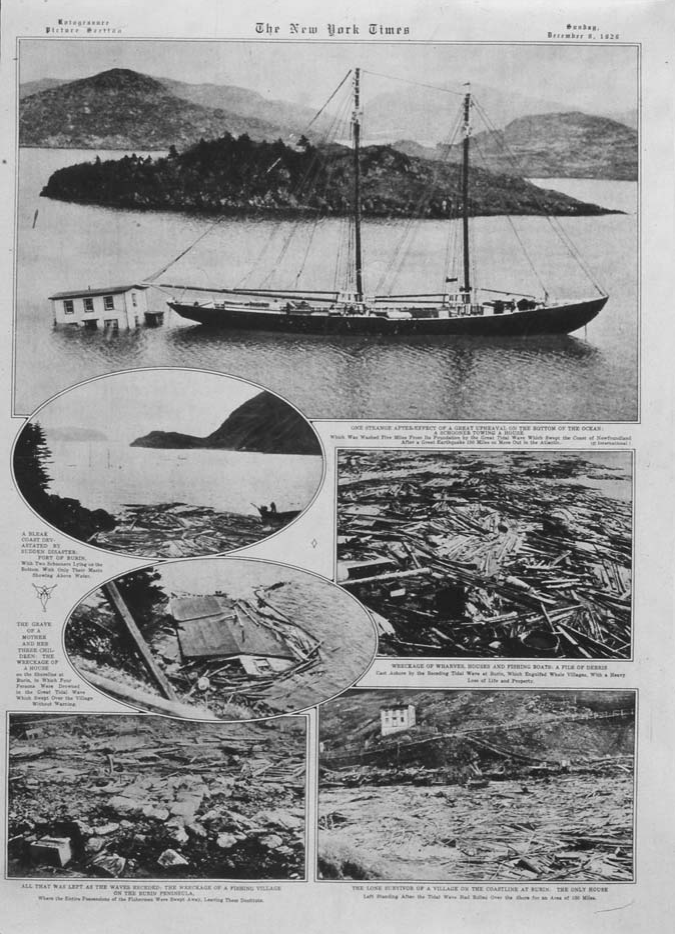
Earthquakes and Tsunamis
Tsunamis are large, long period waves of water that may impact coastal areas reaching several tens of metres in height. Because of Nova Scotia′s position on a trailing-edge plate margin the risk of a tsunami is low. However, on November 18, 1929 an earthquake located near the southern edge of the Grand Banks, and the resulting underwater landslide, created a tidal wave that hit Newfoundland reaching heights of three to seven metres. With large amounts of coastal development, an event of this scale today would result in large loss of life in Nova Scotia.

Photographs taken of Newfoundland after a tsunami on November 19, 1929, and appearing in The New York Times of December 8, 1929.